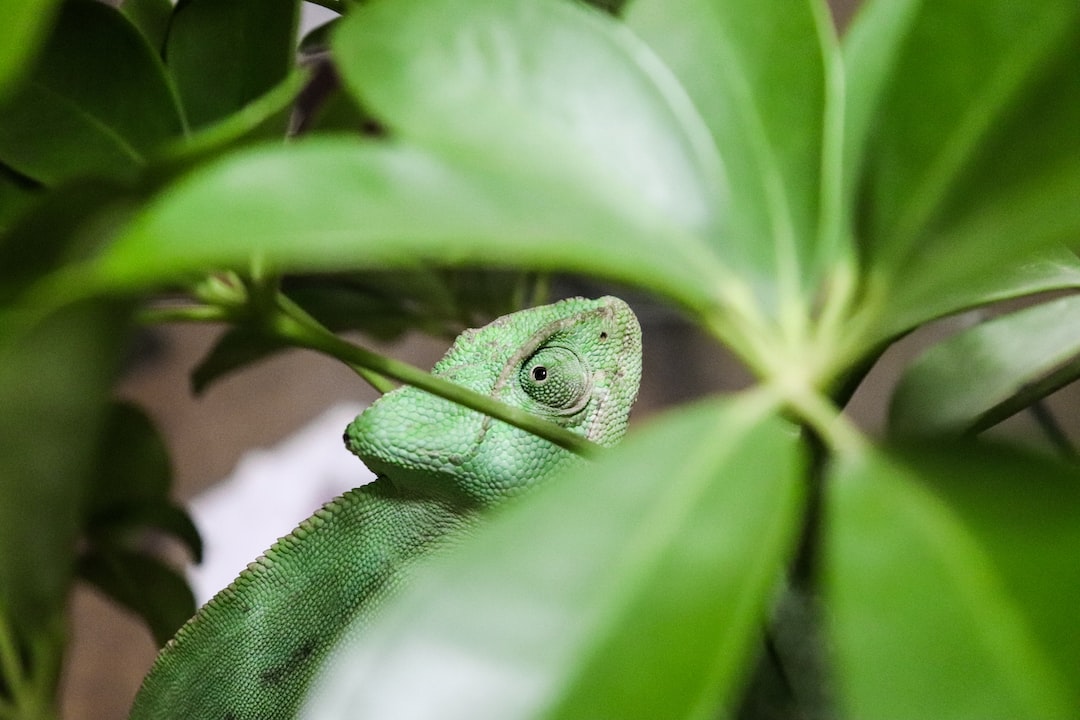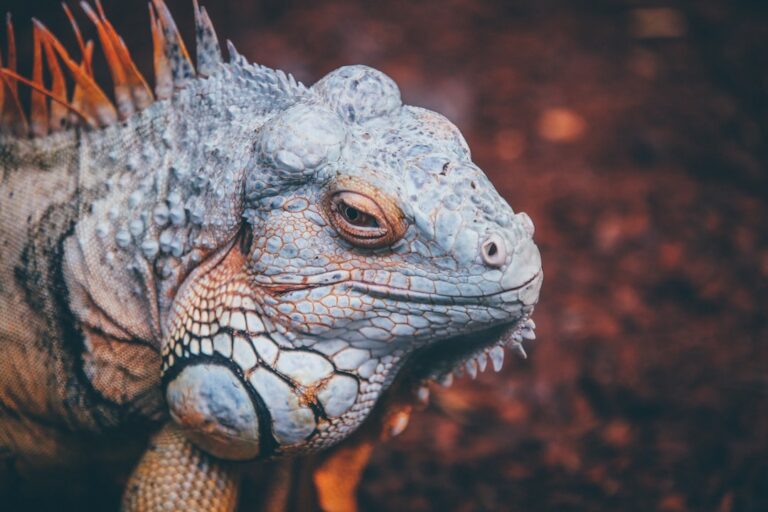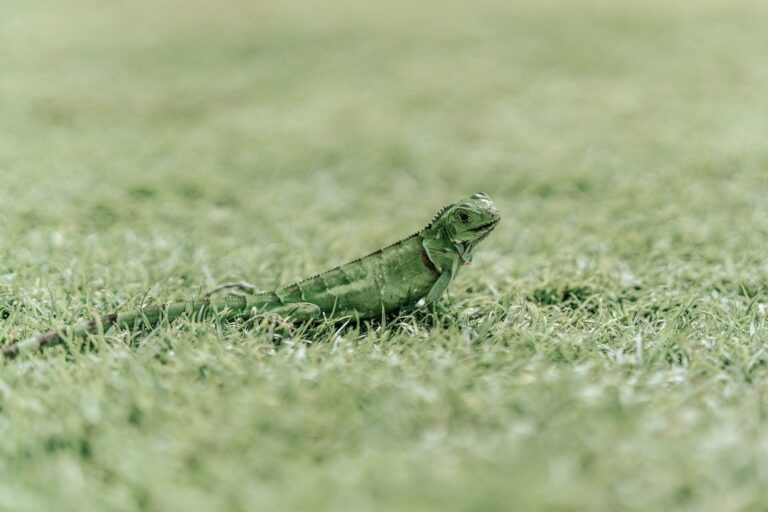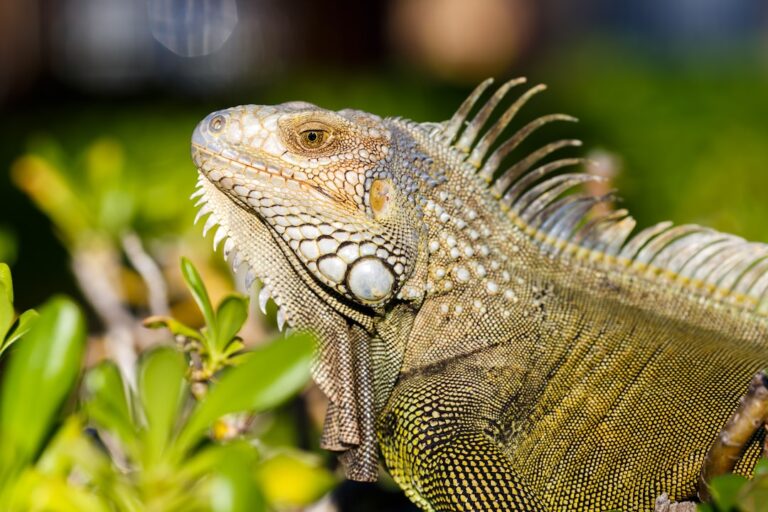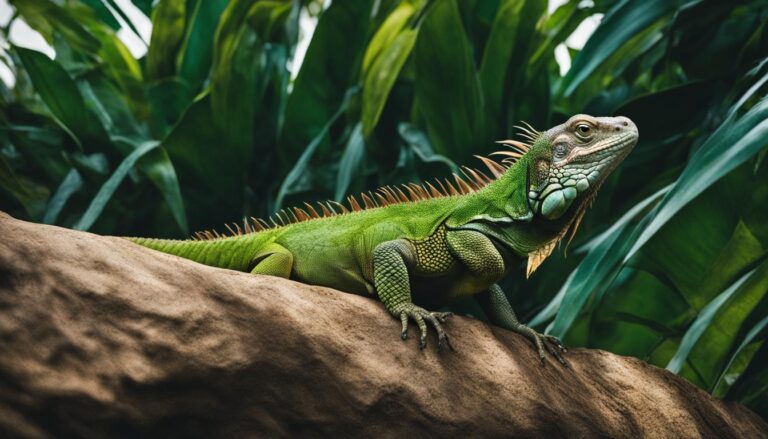Can Iguanas Climb Walls?
Iguanas are a type of reptile that belong to the family Iguanidae. They are known for their distinctive appearance, with long tails, sharp claws, and a row of spines along their backs. Iguanas are native to tropical regions of Central and South America, where they can be found in a variety of habitats including rainforests, deserts, and coastal areas.
In their natural habitat, iguanas are arboreal creatures, meaning they spend most of their time in trees. They have adapted to this lifestyle by developing long, strong limbs and sharp claws that allow them to grip onto branches and climb with ease. Their bodies are also streamlined and lightweight, making it easier for them to maneuver through the trees.
Table of Contents
Understanding the Anatomy of Iguanas
To understand how iguanas are able to climb, it is important to take a closer look at their anatomy. Iguanas have long, muscular tails that serve as a counterbalance when climbing. This allows them to maintain stability and control as they move from branch to branch.
Their limbs are also well-suited for climbing. Iguanas have long fingers with sharp claws that can grip onto surfaces securely. These claws are especially useful when climbing on rough tree bark or other textured surfaces.
Additionally, iguanas have strong muscles in their legs that allow them to generate power and propel themselves upwards. This combination of a strong tail, sharp claws, and powerful legs gives iguanas the ability to climb with agility and precision.
Do Iguanas Have the Ability to Climb Walls?
While iguanas are well-adapted for climbing trees, they do not have the same ability to climb walls like some other animals such as geckos or spiders. This is because their anatomy is specifically designed for climbing vertical surfaces like tree trunks rather than flat, smooth walls.
Iguanas rely on their sharp claws to grip onto surfaces, and walls do not provide the same texture or grip as tree bark. Additionally, their long tails are not as effective for balance and stability on flat surfaces.
However, this does not mean that iguanas cannot climb walls at all. In certain situations, such as if there are ledges or other textured surfaces on the wall, an iguana may be able to climb to some extent. But it is important to note that this is not their natural behavior and should not be encouraged or expected.
Factors That Determine an Iguana’s Climbing Ability
There are several factors that can affect an iguana’s ability to climb. One of the most important factors is the size and age of the iguana. Younger iguanas are generally more agile and have better climbing abilities compared to older ones.
The health and condition of the iguana also play a role in their climbing ability. If an iguana is overweight or has any physical limitations, it may struggle to climb or may not be able to climb at all.
The environment in which the iguana is kept can also impact its climbing ability. If the enclosure does not provide enough vertical space or suitable climbing structures, the iguana may not have the opportunity to develop its climbing skills.
To determine if your iguana can climb, observe its behavior in its enclosure. If it shows interest in climbing structures and is able to navigate them with ease, then it likely has good climbing abilities. However, if it seems hesitant or struggles to climb, it may need additional support or modifications to its environment.
How High Can Iguanas Climb?
The maximum height that an iguana can climb depends on several factors, including its size, age, and overall health. Generally, larger and younger iguanas are capable of climbing higher than smaller or older ones.
In their natural habitat, iguanas have been observed climbing heights of up to 40 feet or more. However, it is important to note that this is not a common occurrence and is usually only seen in certain species of iguanas.
In captivity, the height that an iguana can climb is often limited by the size of its enclosure. It is recommended to provide an enclosure that is at least twice the length of the iguana’s body to allow for adequate climbing space.
The Dangers of Iguanas Climbing Walls Indoors
While iguanas may not have the ability to climb walls like some other animals, there are still risks associated with them attempting to do so indoors. One of the main dangers is the potential for the iguana to fall from a height and injure itself.
Iguanas are not built for landing on hard surfaces, and a fall from even a short distance can result in broken bones or other serious injuries. Additionally, if an iguana falls onto furniture or other objects, it may knock them over and cause damage or injury to itself or others.
Another risk of iguanas climbing walls indoors is the potential for them to escape. Iguanas are skilled escape artists and can squeeze through small openings or gaps in walls or windows. Once outside, they may be exposed to predators, extreme temperatures, or other dangers.
Tips for Keeping Iguanas Safe and Secure
To prevent accidents and ensure the safety of your iguana, there are several steps you can take. First and foremost, it is important to provide a secure enclosure that is escape-proof and free from hazards. This includes ensuring that there are no gaps or openings that the iguana can squeeze through.
It is also important to provide plenty of climbing structures within the enclosure. This can include branches, logs, or other textured surfaces that the iguana can grip onto. These structures should be securely anchored to prevent them from falling or collapsing.
Regular inspections of the enclosure are also necessary to identify and address any potential hazards. This includes checking for loose or damaged climbing structures, as well as ensuring that there are no objects within the enclosure that the iguana could knock over or injure itself on.
Training Iguanas to Climb Walls: Is it Possible?
While iguanas may not have a natural inclination to climb walls, it is possible to train them to do so with patience and proper training techniques. However, it is important to note that this should only be done under the guidance of a professional reptile trainer or experienced iguana owner.
Training an iguana to climb walls involves gradually introducing them to the concept and providing positive reinforcement for their efforts. This can be done by placing textured surfaces or climbing structures against a wall and encouraging the iguana to climb onto them.
It is important to start with low heights and gradually increase the difficulty as the iguana becomes more comfortable and confident. Positive reinforcement, such as treats or praise, should be given when the iguana successfully climbs.
Common Misconceptions About Iguanas and Their Climbing Abilities
There are several common misconceptions about iguanas and their climbing abilities that need to be debunked. One of these misconceptions is that all iguanas can climb walls. As mentioned earlier, while some iguanas may be able to climb walls to some extent, it is not their natural behavior and should not be expected.
Another misconception is that all iguanas are skilled climbers. While iguanas are generally good climbers, there can be variations in their abilities based on factors such as size, age, and overall health. Not all iguanas will have the same level of climbing skills.
It is also important to note that not all iguanas enjoy climbing. Some may prefer to spend more time on the ground or in other areas of their enclosure. It is important to provide a variety of options and environments within the enclosure to cater to the individual preferences of the iguana.
The Importance of Proper Care and Attention for Iguanas
In conclusion, while iguanas are well-adapted for climbing trees, they do not have the same ability to climb walls like some other animals. Their anatomy and natural behavior are specifically designed for climbing vertical surfaces such as tree trunks.
It is important for iguana owners to provide a suitable environment that allows for natural behaviors such as climbing. This includes providing plenty of climbing structures within the enclosure and ensuring that it is secure and free from hazards.
Proper care and attention are essential for the health and well-being of iguanas. This includes providing a balanced diet, regular veterinary care, and a stimulating environment that allows for natural behaviors. By understanding and meeting the needs of iguanas, owners can ensure that their pets live happy and healthy lives.
If you’re interested in learning more about reptiles, you might also enjoy reading the article “Are Iguanas Dangerous?” on Reptile Friend’s website. This informative piece explores the potential risks and behaviors associated with keeping iguanas as pets. From their sharp claws to their powerful tails, iguanas can pose certain challenges for owners. To find out more about these fascinating creatures, click here.

